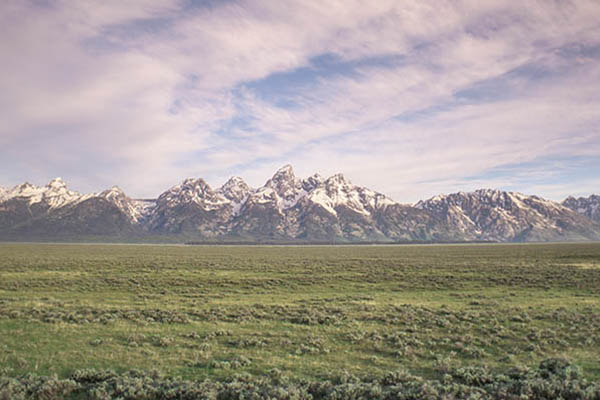Grand Teton National Park is a world-renowned fly-fishing destination due to its pristine waterways that provide incredible habitat for several species of fish, including the Snake River fine-spotted cutthroat trout. The Wild and Scenic Snake River flows from its headwaters on the Two Ocean Plateau in Yellowstone south through Grand Teton, entering Jackson Lake in the northern section of the park and exiting the park just west of the Jackson Hole airport. An abundance of mountain lakes and streams within the park serve as tributaries to the Snake, keeping a constant flow of cold, oxygen rich water readily available for fish. Whether wading or floating, the Snake River and it’s tributaries have plenty of incredible fly-fishing opportunities, so lace up your rod and hit the water!

The Snake River between Jackson Lake Dam and Pacific Creek Landing offers many options for wade-fishing. Photo: Ryan Sheets
Jackson Lake Dam to Pacific Creek: Stretching about five miles along the base of Signal Mountain, this portion of the Snake River offers scenic views, calmer water, and fewer obstructions than other sections of river within the park. This float provides anglers with stable banks and good access along the river shores. The river tends to speed up as you approach the Pacific Creek boat launch, and it is a good idea to check the water conditions at Pacific Creek before launching south of the Jackson Lake Dam. During slower water, there are a number of good wading options near the Pacific Creek boat launch and along Pacific Creek itself. Please be sensitive to nesting bald eagles throughout this section and do not slow down or stop near these areas.
Pacific Creek to Deadman’s Bar: This section of the Snake River can produce excellent fly fishing as the river begins to pick up more water and speed from tributaries. More structure from fallen trees and beaver activity provide pools and eddies for larger fish to occupy. Fishing these eddy lines with a dry fly is a great idea during mid-late summer and early fall. This section of the Snake River is a bit more challenging to access without a boat, but it can certainly be done for the adventurous fisherman. If you are floating, it is a good idea to check with a ranger on current conditions as the river is more channelized in places and you don’t want to end up going down a channel that is not passable.

The Snake River fine-spotted cutthroat trout. Photo: Ryan Sheets
The Gros Ventre River: Flowing out of its namesake mountain range, the Gros Ventre (pronounced “grow-vont“) is an excellent option for anglers who prefer wading. Floating tributaries in Grand Teton in any sort of vessel is prohibited, making this waterway the perfect place to find solitude with only a little bit of walking. The easiest places to access the river are along the road from the Gros Ventre Junction roundabout on highway 89 east to the town of Kelly. There are multiple pullouts and areas to safely park and hoof it to the water. As always, be aware of your surroundings as the Gros Ventre is popular moose habitat!
Fly fishing in Grand Teton National Park is an outstanding opportunity to connect with the river and it’s unique ecosystem. Please remember to be responsible, carry all of the necessary permits and stamps, and respect other river users. Most of all have fun. Happy fishing!









